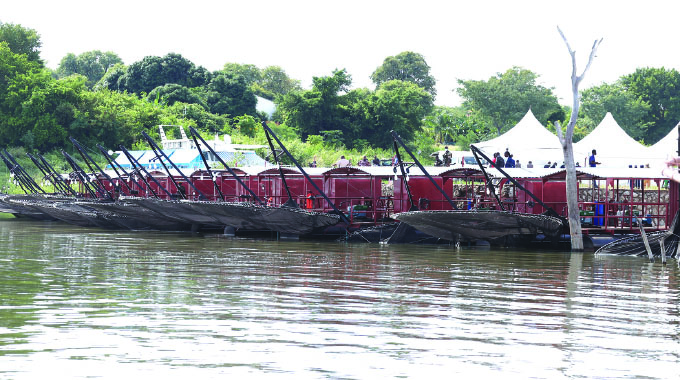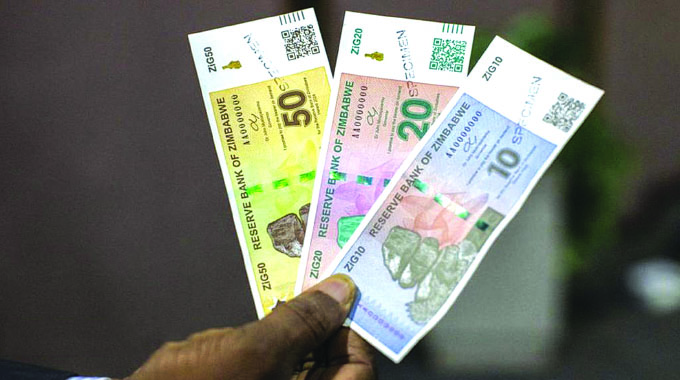Tracing roots of the Chirandu clan: Part 12

Week 12
Claude Maredza Correspondent
Continued . . .
So for example, we know that after the 1450 civil war, Mukwati, a Shoko Mbire Mukanya Chirongo became the new national paramount and moved the capital from Great Zimbabwe to the new Guruuswa at Njelele near today’s Bulawayo.
This is what is referred to as the Changamire period because Mukwati was helped by Changa WeMbire, therefore, Changamire to defeat Mutota, a Moyo Chirandu who had asked for his turn to rule, but Mukwati spurned that request and said, “bva torwa/togwa”, meaning lets fight, leading to this chaos that destroyed Great Zimbabwe.
This resulted in the Torwa/Togwa period of the Changamires because of Changa WeMbire’s assistance of Mukwati in this civil war, as explained above.
We also know that Mutota fled north-east to occupy the area which is today the Dande Valley/Chiweshe/Korekore area, making the Korekore people originally Moyo Chirandus, who became Korekore because Mutota, a Moyo Chirandu regional paramount said so.
We also know that between 1675 and 1695, General Mutinhima Dhewa, also known as General Dombodzvuku, a Moyo Chirandu commander of the Zimbabwe armed forces of the time, fought the first ever Chimurenga in Zimbabwe (and this is the de facto and the de jure first chimurenga in Zimbabwe) because Zimbabwe faced external attack from the Portuguese.
He managed to drive the Portuguese right out of Zimbabwe and left them at the Indian Ocean so that they could go back were they came from.
Because of General Dombodzvuku’s military modus operandi, him and his soldiers and eventually most people around him, particularly the Moyo Chirandus, who were of the same totem as General Dombodzvuku, started getting referred to by many descriptions such as VaRozvi, Moyondizvo, Dhewa, Bvumavaranda (because he gave a directive that the Portuguese that were captured in this chimurenga had to be treated properly and not harshly, so bvuma- meaning positively receive or accept; varanda — meaning subjects under you such as these prisoners of war).
At the same time, General Dombodzvuku quelled yet another internal power struggle at Njelele.
When he quelled this rebellion, General Dombodzvuku took over as the national paramount of Zimbabwe.
Thus, in General Dombodzvuku, we had the first Moyo Chirandu national paramount of Zimbabwe and for the first time we had a long period of peace and prosperity never experienced before or after, even to this very day as you read this, in Zimbabwe under the rulership of the Moyo Chirandus; we had nearly two hundred years of uninterrupted peace and prosperity under the direction, guidance and rulership of the Moyo Chirandus.
This is the period referred to as the Rozvi period of the Mambos or simply The Moyo Chirandu Miracle because Zimbabwe has never experienced such peace and prosperity, even to this very day as you read this, as experienced during this nearly 200-year period when the Moyo Chirandus were in charge of this country, hence The Moyo Chirandu Miracle.
We also know that most Moyo Chirandus during this period settled in the area around what we call Matabeleland today, as this was close to the national capital at Njelele.
This has resulted in a very high number of Moyo Chirandus in Matabeleland today, who were vassalised into being Ndebele by the raiding Mzilikazi Khumalos, but everybody knows that in reality they are really Moyo Chirandus even if for political correctness and survival they had to become Ndebele. It is sad because some of these Moyo Chirandus all over Matabeleland up to this day erroneously think that they are Ndebele/Khumalo Zulus when they are not.
That’s what happens when you are conquered and vassalised.
Perhaps the other sad story of being conquered and being vassalised is that of the Gushungo clan of Zvimba. This is the clan that former president Robert Mugabe, the retired executive president of the Republic of Zimbabwe belongs to.
They are now referred to as Ngwenya or Ngwena, which is the crocodile, one of the totems or sub-totems of the Dziva/Hungwe/Kalanga people who venerate anything to do with water because way back in time when everybody lived in Nubia/Kemet, the Dziva/Kalanga/Hungwe lived near the sea (perhaps near the Red Sea or near the Red Sea’s confluence with the Indian Ocean) and they were referred to as the people of water or the people of the east where the sun comes from. But the Gushungo people have never been Ngwenya. They only became referred to as Ngwenya as a way of finding survival in a situation that required political correctness in order to survive and escape harassment as we shall shortly see.
The conquest and vassalisation suffered by most Shonas at the hands of the Khumalo Zulus/Ndebeles also affected the Gushungo clan, the Gushungo clan themselves being Shona also, to the extent that the Gushungo clan had to fake the Ngwenya totem, which has never been their totem so that they could be acceptable to the Khumalo Zulus/Ndebeles and enjoy some semblance of peace and quiet.
The Gushungo clan are originally Moyo Chirandu, who became Korekore and changed their totem — mutupo — to Tsivo Mbwetete, with Zvimba and Gushungo as their most recognisable and mostly used honorific and praise titles.
The background to this is that when the civil war broke out at Great Zimbabwe in 1450, Mutota, a Moyo Chirandu crown prince of the Mutapa Empire was defeated by his cousin, Mukwati, a Shoko Mbire Mukanya.
Mutota then fled the Great Zimbabwe area and headed for the Dande Valley, where he conquered the whole place encompassing Dande Valley, Guruve, Chiweshe and their environs.
These areas were under the Tavara people, who themselves were Hungwe/Dziva/Kalanga.
So the Tavara people were now under Mutota and Mutota became the regional paramount ruler of this area.
We can also quickly point out that Korekore is not really a tribe, but just another description like Duma, Dhewa, Rozvi, Mondizvo e.t.c, descriptions attributed to the Moyo Chirandu people as already observed.
When Mutota and his people settled in Dande Valley, they didn’t settle in one place initially.
They shifted their residences within the expanse of the Dande Valley and other areas under them almost on a yearly basis.
This led to the people describing them as gore negore i.e. people, who live in a place only for a year (gore) and they move again.
This then got linguistically changed to gore–kore until for phonetic reasons, it became Korekore and Mutota’s people got described as such and, therefore, became permanently referred to as Makorekore. Also, elsewhere herein, we indicate that Mutota changed his mutupo from Moyo Chirandu to Nzou Samanyanga, i.e. the elephant, as he wanted to exert his total authority over the Tavara people by giving himself a totem of the largest animal in the jungle, therefore, giving himself the mystique and aura of power like the large elephant.
With that, therefore, Mutota’s people became Nzou Samanyanga by totem and Korekore by description, which, with time is now being mistaken to be a tribe by itself when it was only a description.
This is déjà vu Moyo Chirandu Duma/Rozvi/Dhewa/Moyondizvo or Mondizvo/Bvumavaranda e.t.c, all these being the same Moyo Chirandus from the same source being described variously because of the different experiences they encountered as observed in detail elsewhere herein.
The reason why Mutota changed his mutupo is because the Tavara people’s mutupo was Nzou Mukotami, but this Nzou Mukotami refers to the hippo, a water animal which was in tandem with the Tavara people because being Dziva/Hungwe/Kalanga, they venerated anything to do with water; and hippos are water animals.
They nicknamed the hippo nzou/zhou which ordinarily refers to the elephant because of the hippo’s rather large size, although smaller than the elephant, but large all the same.
Claude Maredza is a member of the Moyo Chirandu (Duma) Dynasty, specifically of Norumedzo Village (KuHarurwa), Bikita, Masvingo, Zimbabwe and is in fact a Crown Prince of the Norumedzo Moyo Chirandu (Duma) Kingdom Royalty. He has doctoral level formal education and everything else below that besides other professional qualifications. He is also a well known published author and film writer/producer/director/actor. His contact details are; e mail;[email protected]; phone: 00 263 (0) 77 2 382 099.







Comments